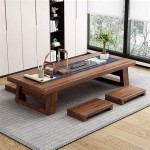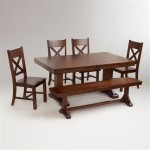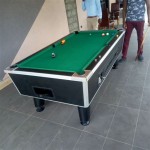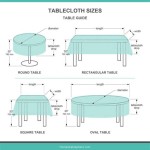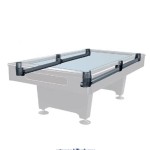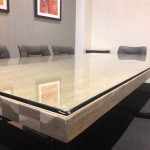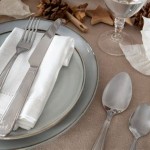Gambar Table Setting for Lunch: A Comprehensive Guide
The art of setting a table elevates a simple meal into a more sophisticated and enjoyable experience. For lunch, a less formal setting compared to dinner is typically employed, but attention to detail and adherence to established etiquette principles remain important. The "Gambar" (which translates to "picture" or "image" in several languages) aspect focuses specifically on the visual arrangement and composition of the table setting, aiming for an aesthetically pleasing and functional layout. This guide explores the essential elements and considerations for crafting a proper and visually appealing lunch table setting.
A well-prepared lunch table setting contributes to the overall dining experience, showcasing hospitality and attention to detail. It also helps facilitate a smooth and efficient meal service. Guests feel more comfortable and valued when they are presented with a carefully arranged table, signalling that their presence is appreciated. The "Gambar" element, in particular, emphasizes the visual harmony and balance, ensuring that the table setting is not only functional but also pleasing to the eye.
Key Point 1: Essential Components of a Lunch Table Setting
The foundation of a lunch table setting lies in its essential components, each serving a specific purpose. These elements, when arranged correctly, create a functional and aesthetically pleasing dining environment.
Tablecloth or Placemats: The choice between a tablecloth and placemats depends on the desired level of formality and the table's inherent aesthetic qualities. A tablecloth, typically made of linen or cotton, offers a more formal and elegant look. It provides a clean and uniform surface, protecting the table from spills and scratches. Placemats, on the other hand, are a more casual option. They can be made from various materials, including fabric, cork, or plastic, and add a touch of personality and color to the table. If using placemats, ensure they are large enough to accommodate the plate, cutlery, and glassware.
Dinner Plate: The dinner plate serves as the central point of the table setting. It is usually placed in the center of the placemat or at the designated spot on the tablecloth. The size and style of the plate should be appropriate for the type of lunch being served. A simple, classic white plate is a versatile option that complements a wide range of table decor. For more casual lunches, decorative plates can add a pop of color and visual interest.
Cutlery: The placement of cutlery follows a specific protocol. The fork is placed to the left of the plate, and the knife is placed to the right, with the blade facing inwards towards the plate. The spoon, if needed (for soup or dessert), is placed to the right of the knife. The order of cutlery reflects the order in which the dishes will be served, working from the outside in. For example, if a salad is served before the main course, a salad fork would be placed furthest to the left.
Glassware: A water glass is essential for every lunch setting and is placed above the knife. If wine is being served, a wine glass is placed to the right of the water glass. The type of wine glass depends on the type of wine being served. A red wine glass typically has a larger bowl than a white wine glass. The placement of glassware should be neat and orderly, avoiding overcrowding the table.
Napkin: The napkin can be placed either to the left of the fork, under the fork, or on the dinner plate. The choice depends on personal preference and the overall aesthetic of the table setting. A linen or cotton napkin adds a touch of elegance, while paper napkins are acceptable for more casual lunches. The napkin should be neatly folded or presented in a napkin ring.
Key Point 2: Enhancing the "Gambar" (Image) of the Table Setting
Beyond the essential components, several elements can enhance the visual appeal or "Gambar" of the lunch table setting, contributing to a more memorable and aesthetically pleasing dining experience. This involves considering color palettes, textures, and decorative accents.
Color Scheme: Selecting a cohesive color scheme is crucial for creating a visually harmonious table setting. Consider the overall ambiance of the dining area and the type of lunch being served. Neutral colors, such as white, beige, and gray, provide a classic and elegant backdrop that allows the food to be the focal point. Adding pops of color with placemats, napkins, or decorative accents can create visual interest. Monochromatic schemes, using different shades of the same color, can also be effective. Avoid overly bright or clashing colors, which can be visually distracting.
Centerpiece: A centerpiece adds a focal point to the table and enhances its overall aesthetic. For lunch, a simple and understated centerpiece is often more appropriate than an elaborate one. Fresh flowers in a vase, a bowl of fruit, or a small arrangement of candles can create a welcoming and inviting atmosphere. The centerpiece should not be too tall, as it can obstruct the view of guests across the table. It should also be proportionate to the size of the table, avoiding overcrowding or overwhelming the space.
Linens and Textiles: The choice of linens and textiles, including tablecloths, placemats, and napkins, plays a significant role in the overall "Gambar" of the table setting. Linen and cotton are classic choices that add a touch of elegance. Consider the texture and pattern of the linens, ensuring they complement the other elements of the table setting. Avoid using tablecloths or placemats with overly busy patterns, which can be visually distracting. Neutral colors and subtle patterns are generally the safest choices.
Charger Plates: While not strictly essential for lunch, charger plates can add a touch of elegance and sophistication to the table setting. They are decorative plates placed under the dinner plate and are removed after the appetizer course. Charger plates come in various materials, including metal, glass, and ceramic, and can be chosen to complement the overall color scheme and style of the table setting. If using charger plates, ensure they are clean and polished.
Personalized Touches: Adding personalized touches can make the lunch table setting more special and memorable for guests. This could include place cards with each guest's name, small favors, or handwritten notes. These small gestures show that you have put thought and effort into creating a welcoming and personalized dining experience. However, avoid overdoing the personalized touches, as too many elements can clutter the table.
Key Point 3: Functional Considerations and Etiquette
Beyond the visual aspects, functionality and adherence to proper etiquette are crucial components of a successful lunch table setting. The arrangement should facilitate a smooth and comfortable dining experience for all guests.
Sufficient Space: Ensure that guests have ample space at the table to eat comfortably. Avoid overcrowding the table with too many dishes, cutlery, or decorative items. A general guideline is to allow at least 24 inches of space per person. This provides enough room for each guest to move freely and enjoy their meal without feeling cramped.
Accessibility: Make sure that all necessary items, such as salt, pepper, and water pitchers, are easily accessible to all guests. Place these items centrally on the table or provide multiple sets if the table is long. Avoid placing items in locations that are difficult for guests to reach or that require them to interrupt other diners.
Cutlery Usage: Inform guests, if necessary, regarding the proper use of cutlery. In general, cutlery is used from the outside in, with the outermost utensils being used for the first course and so on. If multiple forks or spoons are present, clarify their purpose to avoid confusion. Proper cutlery usage contributes to a more refined and enjoyable dining experience.
Napkin Etiquette: Encourage guests to place their napkins in their laps immediately after being seated. If they need to leave the table temporarily, they should place their napkin on their chair. When the meal is finished, they should place their napkin loosely folded to the left of their plate. Proper napkin etiquette demonstrates respect for the host and contributes to a more polished and refined dining experience.
Dietary Considerations: Be mindful of any dietary restrictions or allergies that guests may have. Inquire about these needs in advance and ensure that appropriate food options are available. Clearly label any dishes that are gluten-free, vegetarian, or vegan to avoid confusion. Catering to dietary needs demonstrates consideration and respect for your guests.
In conclusion, creating a well-executed "Gambar" table setting for lunch involves a careful consideration of essential components, visual aesthetics, functional considerations, and etiquette. By paying attention to these details, hosts can elevate a simple meal into a more sophisticated and enjoyable experience for their guests.

Guidelines For All Table Settings Formal Lunch Setting Etiquette

Training Restoran Table Setting

Pin By Ariel On Diy Dining Etiquette Table Settings

Lunch Table Set Up Restaurant Plates And Glasses Stock Foto Adobe

Decorated Table With Cutlery Ready To Use It For A Lunch の写真素材 ストックフォト 写真素材のstock Foto ストックドットフォト

Foto Stock Lunch Break Dining Table Served In Modern Room Wooden And Chairs Home With Elegant Setting Luxury For

Table Setup Pengertian Fungsi Peralatan Dan Jenis Penataan Meja

Table Setting For Birthday Lunch Foto 107 Dining Room Heswall Tripadvisor

Catering Service Restaurant Table With Food Huge Amount Of On The Plates Dinner Time Lunch の写真素材 ストックフォト 写真素材のstock Foto ストックドットフォト
Dining Etiquette

